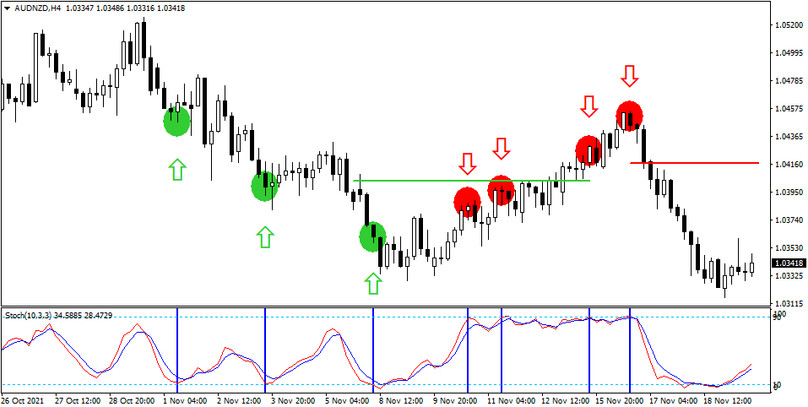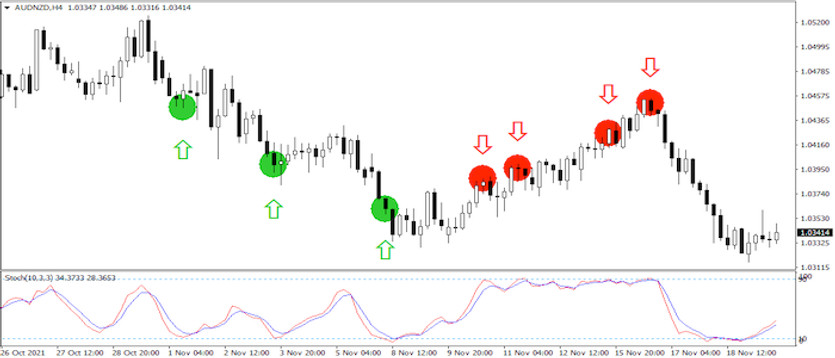Australia and New Zealand. Two countries that are so close politically and economically that investors and traders often treat them as if they were one.
This, of course, has a significant impact on the exchange rate development of their currency pair, AUDNZD, whose average changes have been in the order of several percent for a long time, and our unique Stochastic Accumulation Strategy takes advantage of this fact.
Strategy entry rules (example)
Entering long positions
- The red line of the indicator hits the lower limit level (the 10% level)
Entry into short positions
- the red line of the indicator hits the upper limit level (the 90% level)
How to trade with the strategy
In the chart below, you can see that entries into trading positions occur whenever the red line (you need to wait for the candle to close) touches one of the two plotted Stochastic levels (10-long entries, 90-short entries). And due to the fact that this is an accumulation strategy, if the market does not want to go in the "right" direction, then every time a new hit of the same indicator level occurs, there is also another entry into the position (usually of the same volume), which on the one hand increases the volume, but on the other hand, also changes the average entry value. This ultimately allows us to exit the position earlier than if we had only made one single entry (see below the red and green horizontal lines mark the average entry value after all long/short entries have occurred).
Note: Given that the two countries using AUD and NZD are very close to each other, this really makes today's strategy a tailor-made one for them. On the other hand, if one would like to use this strategy within another currency pair, then one should keep in mind that many instruments can experience moves of even a few tens of percent, which can present higher financial capital requirements and this should never be underestimated, of course.

With this simple but very effective strategy, it is possible to achieve a long-term success rate of more than 80% on the AUDNZD currency pair.





